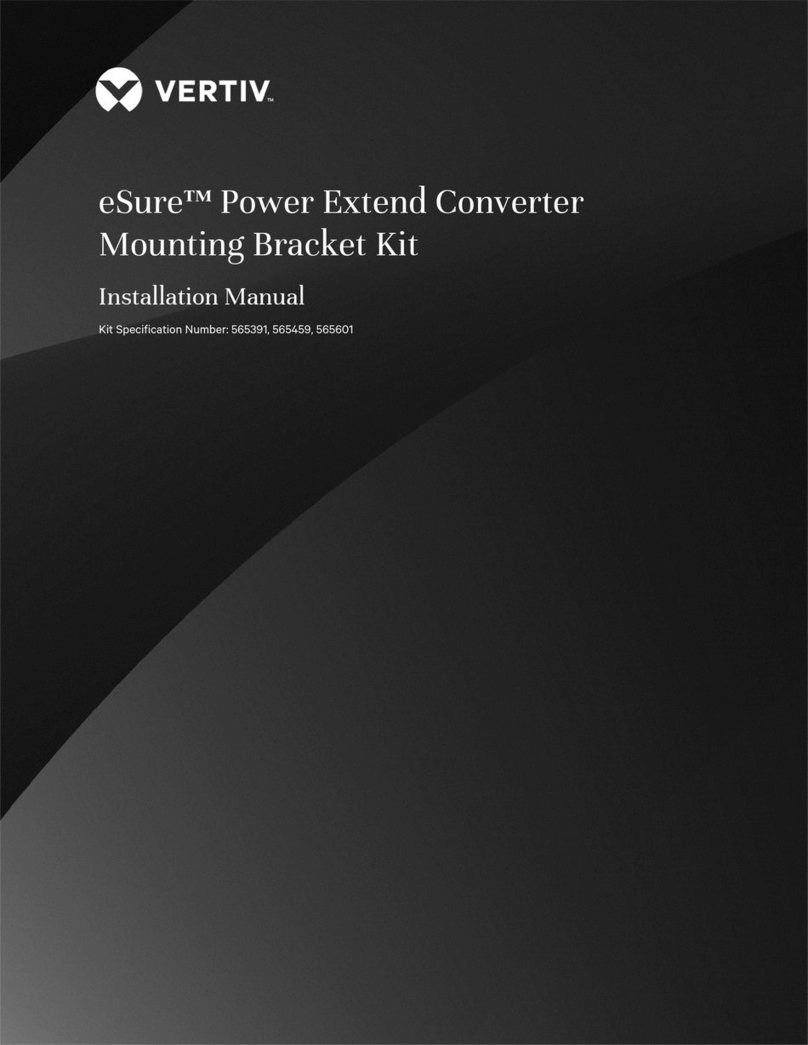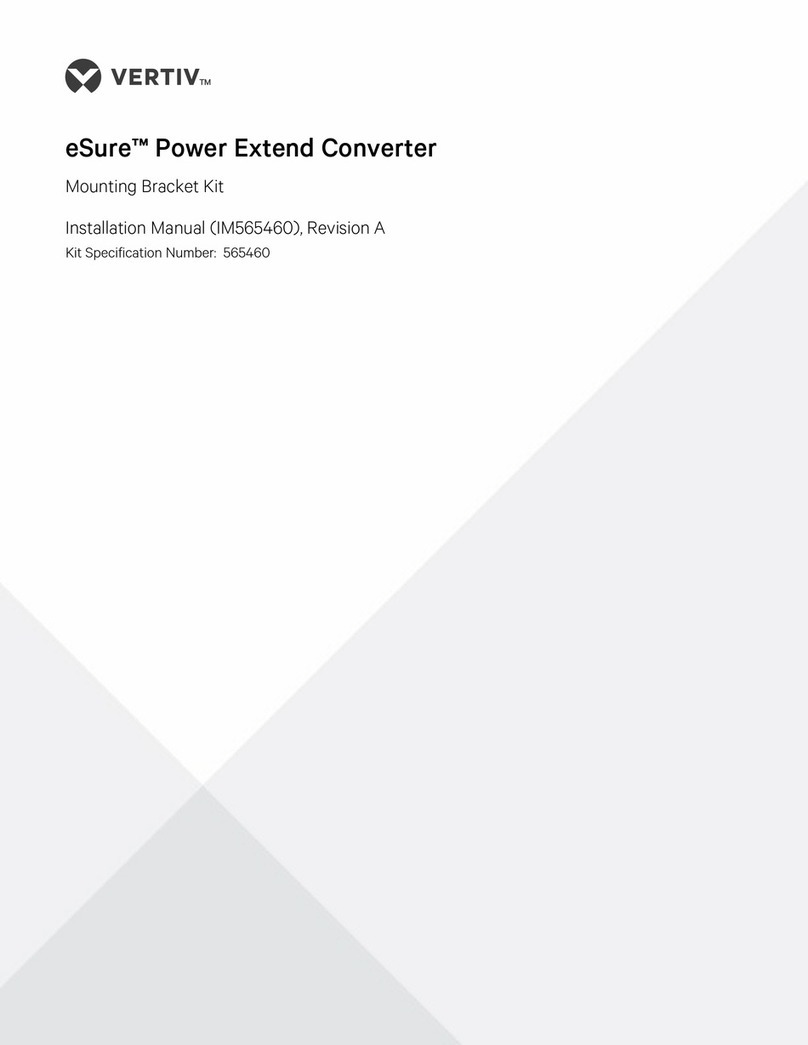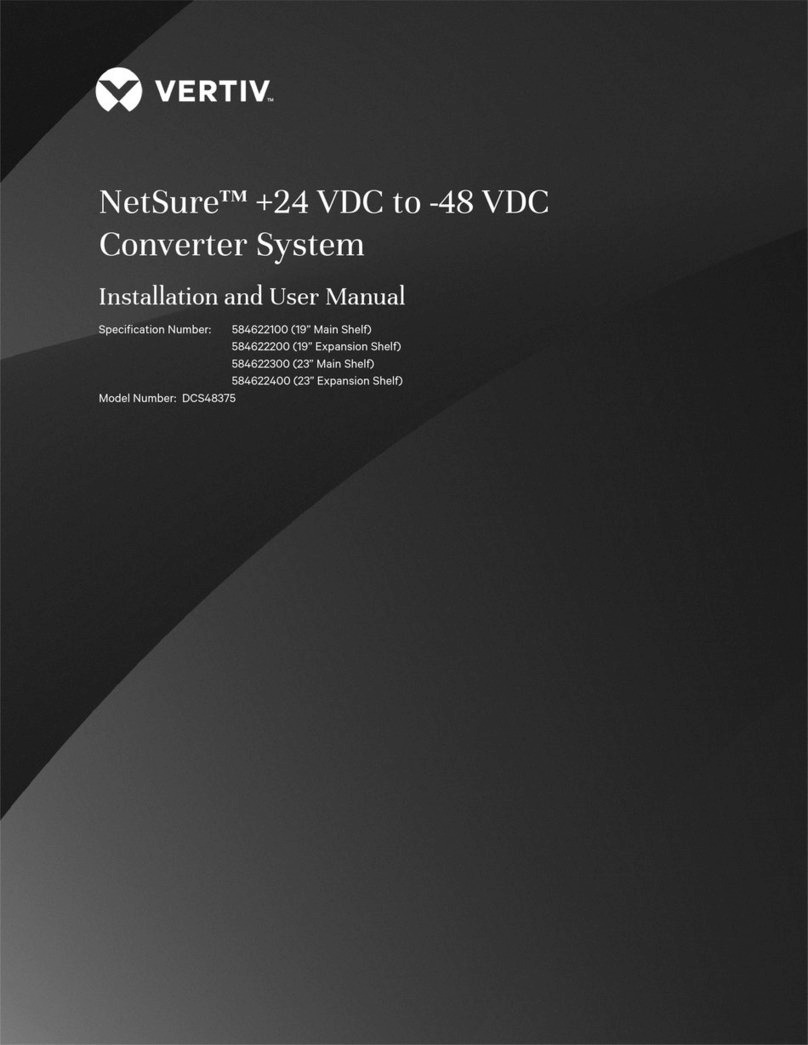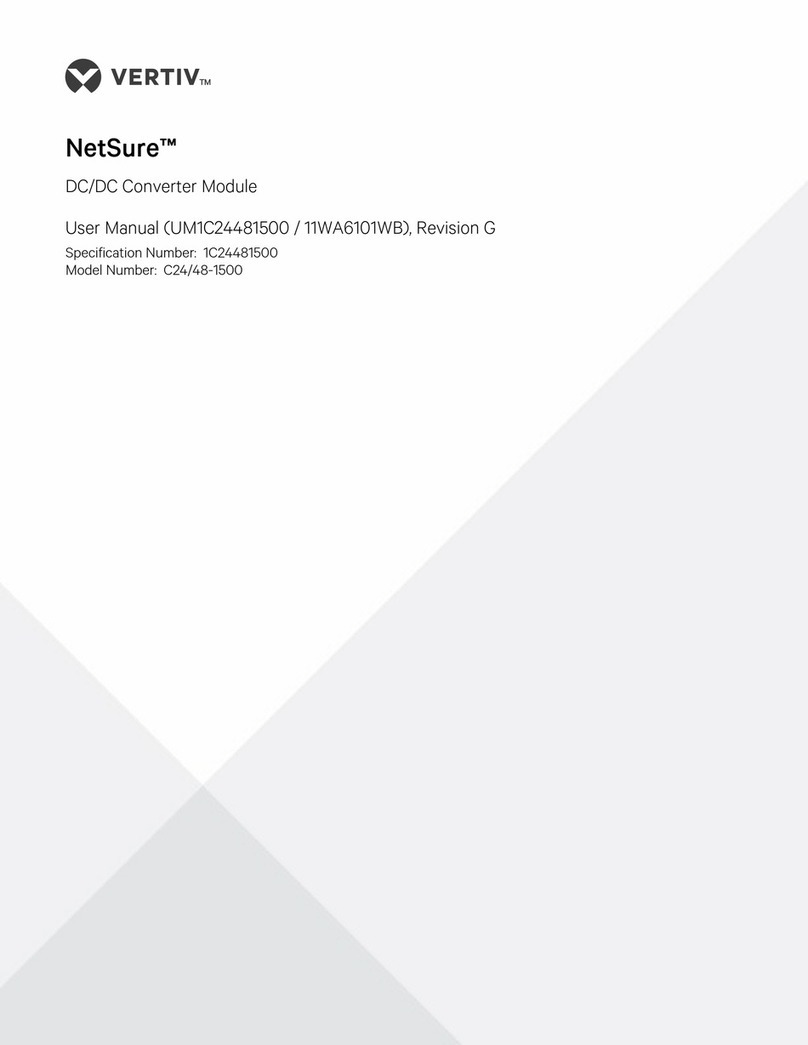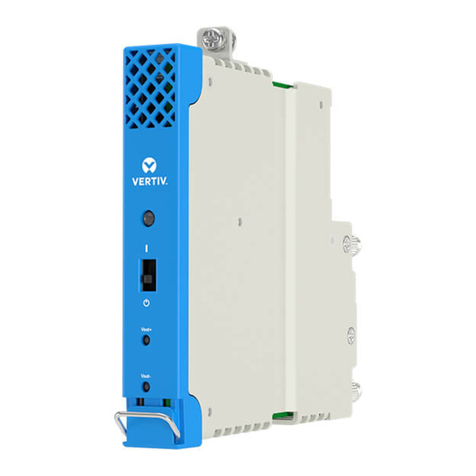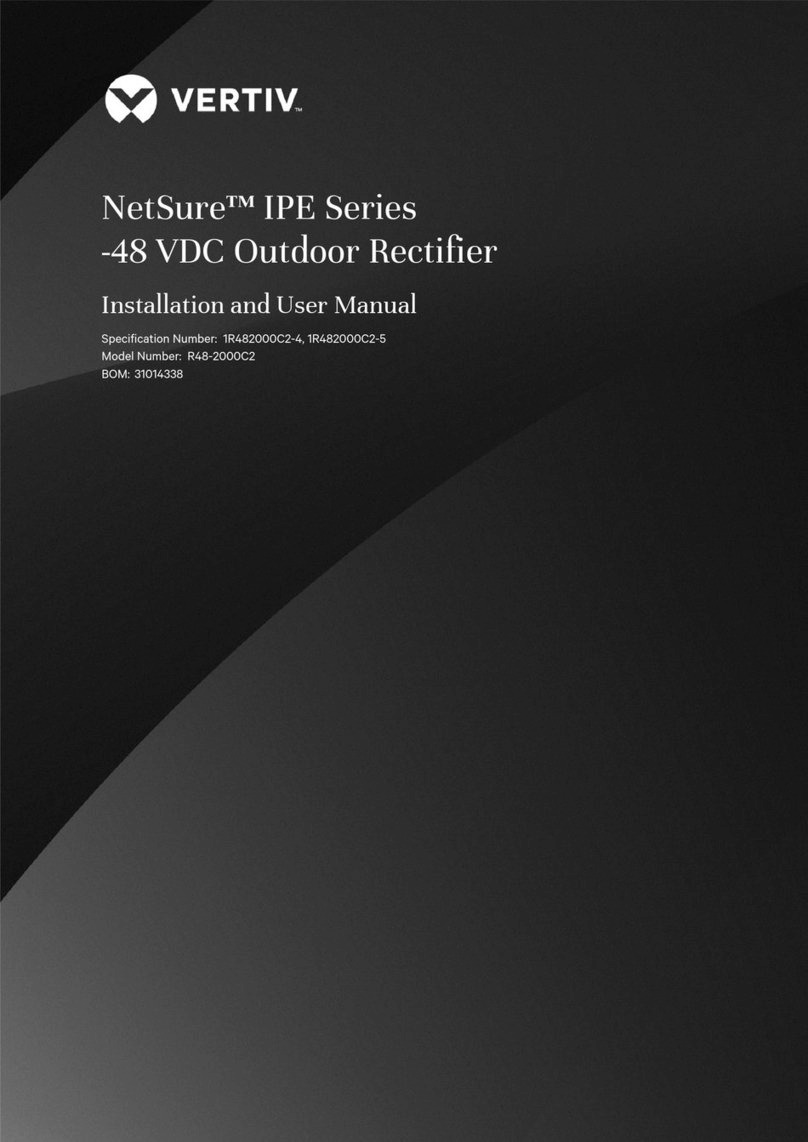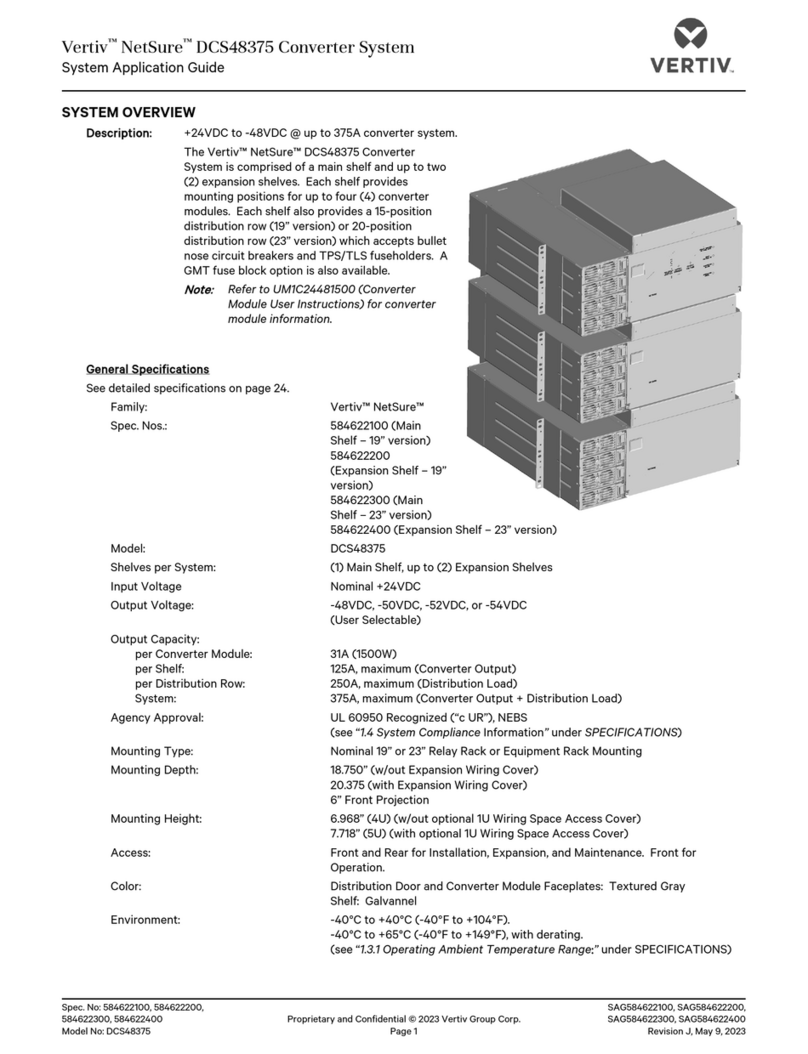
Vertiv |NetSure DC/DC Converter Module User Manual (1C400483500e / 11XA9076RJ)|Rev. G
TABLE OF CONTENTS
Admonishments Used in this Document............................................................4
Important Safety Instructions ..............................................................................5
General Safety ...........................................................................................................................................................5
Voltages...........................................................................................................................................................................5
DC Input Voltages........................................................................................................................................................ 5
DC Output and Battery Voltages .................................................................................................................. 5
Personal Protective Equipment (PPE)............................................................................................. 6
Hazardous Voltage.............................................................................................................................................. 6
Handling Equipment Containing Static Sensitive Components............................. 6
Static Warning...........................................................................................................7
Introduction ...............................................................................................................9
Overview.........................................................................................................................................................................9
Specifications ............................................................................................................................................................ 9
DC Output Ratings ......................................................................................................................................................9
DC Input Ratings ...........................................................................................................................................................9
Environmental Ratings ......................................................................................................................................... 10
Compliance Information........................................................................................................................................11
Standard Features ......................................................................................................................................................11
Mechanical Specifications................................................................................................................................. 14
Operation.................................................................................................................. 15
Local Indicators.....................................................................................................................................................15
Converter High Voltage Shutdown and Lockout Restart...........................................15
Installing Converter Modules...................................................................................................................16
Troubleshooting and Repair................................................................................ 18
Troubleshooting ...................................................................................................................................................18
Converter Current Sharing Imbalanced................................................................................................18
Converter Fault Symptoms and Troubleshooting......................................................................18
Replacement Procedures...........................................................................................................................20
Converter Module Replacement................................................................................................................ 20
Converter Fan Replacement............................................................................................................................21
